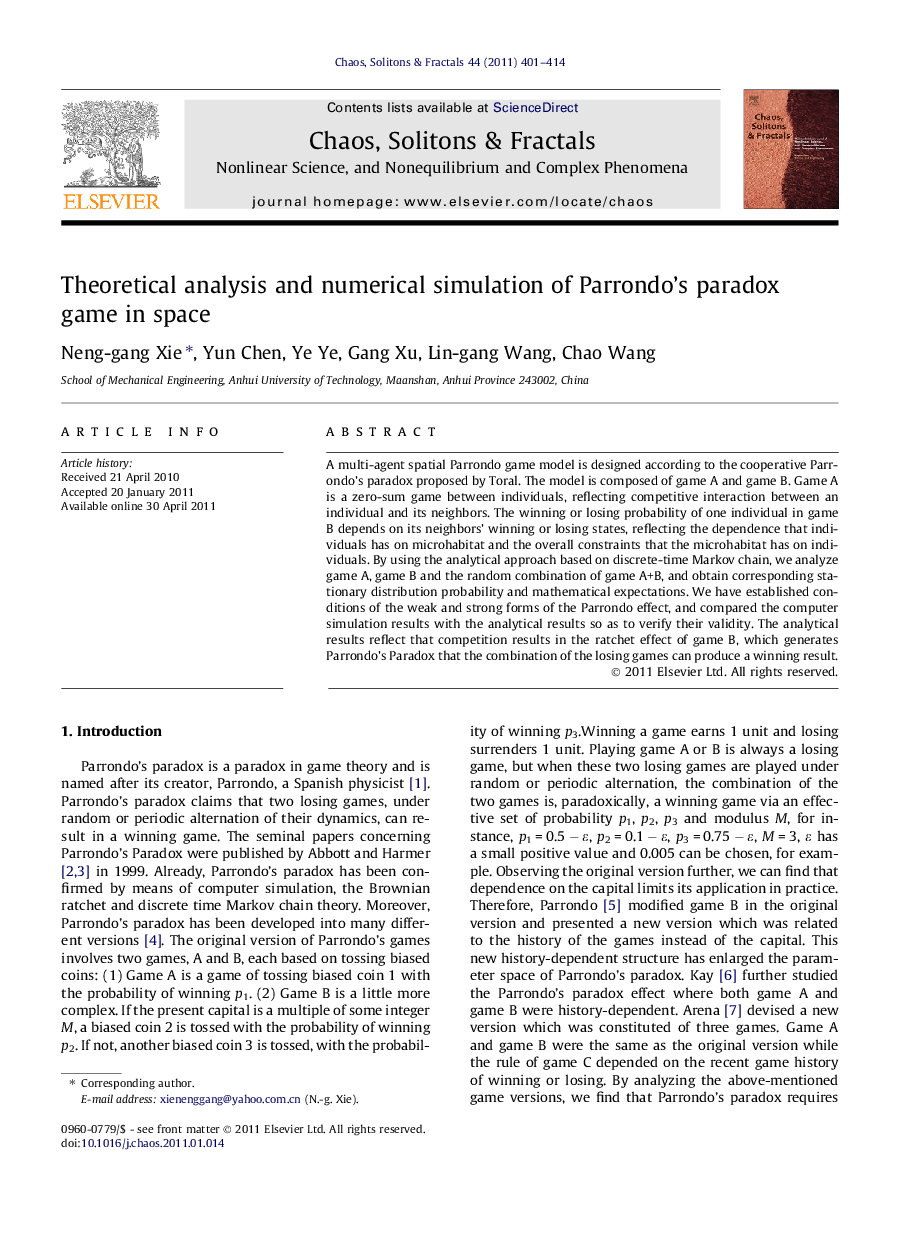| Article ID | Journal | Published Year | Pages | File Type |
|---|---|---|---|---|
| 1892987 | Chaos, Solitons & Fractals | 2011 | 14 Pages |
A multi-agent spatial Parrondo game model is designed according to the cooperative Parrondo’s paradox proposed by Toral. The model is composed of game A and game B. Game A is a zero-sum game between individuals, reflecting competitive interaction between an individual and its neighbors. The winning or losing probability of one individual in game B depends on its neighbors’ winning or losing states, reflecting the dependence that individuals has on microhabitat and the overall constraints that the microhabitat has on individuals. By using the analytical approach based on discrete-time Markov chain, we analyze game A, game B and the random combination of game A+B, and obtain corresponding stationary distribution probability and mathematical expectations. We have established conditions of the weak and strong forms of the Parrondo effect, and compared the computer simulation results with the analytical results so as to verify their validity. The analytical results reflect that competition results in the ratchet effect of game B, which generates Parrondo’s Paradox that the combination of the losing games can produce a winning result.
► A multi-agent spatial Parrondo game model is designed. ► Double actions between individual and its neighbors are discussed. ► The weak and strong paradox conditions are established by theoretical analysis. ► Research results demonstrate some new biological points. ► Competition is an adaptive behavior on the population level too.
